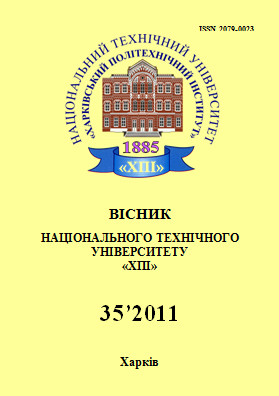Динамическая кластеризация временных рядов с использованием агрегированных показателей
DOI:
https://doi.org/10.20998/%25xAbstract
В статье рассматривается задача кластеризации временных рядов применительно к котировкам акций. В работе были использованы: метод получения главных компонент «Гусеница» и коэффициент Хёрста для подсчета параметров ряда; метод k-среднего и евклидово расстояние для кластеризации.
References
Todd Wittman. Time-Series Clustering and Association Analysis of Financial Data [Электронный ресурс] : сайт математического факультета Университета Калифорнии – Режим доступа: http://www.math.ucla.edu/~wittman/thesis/project.pdf.
T.Warren Liao. Clustering of time series data — a survey. [Электронный ресурс]: архив статей Университета Пенсильвании – Режим доступа: http:// citeseerx.ist.psu.edu /viewdoc /download ?doi=10.1.1.115.6594 &rep=rep1 &type=pdf.
Метод «Гусеница» [Электронный ресурс]: сайт об методе «Гусеница» – Режим доступа: http://www.gistatgroup.com/gus/
Показатель Хёрста [Электронный ресурс] : международная интернет энциклопедия – Режим доступа: http://en.wikipedia.org/wiki/Hurst_exponent.
Downloads
Published
How to Cite
Issue
Section
License
Copyright (c) 2016 Вісник Національного технічного університету «ХПІ». Серія: Системний аналiз, управління та iнформацiйнi технологiїAuthors who publish with this journal agree to the following terms:
- Authors retain copyright and grant the journal right of first publication with the work simultaneously licensed under a Creative Commons Attribution License that allows others to share the work with an acknowledgement of the work's authorship and initial publication in this journal.
- Authors are able to enter into separate, additional contractual arrangements for the non-exclusive distribution of the journal's published version of the work (e.g., post it to an institutional repository or publish it in a book), with an acknowledgement of its initial publication in this journal.
- Authors are permitted and encouraged to post their work online (e.g., in institutional repositories or on their website) prior to and during the submission process, as it can lead to productive exchanges, as well as earlier and greater citation of published work (See The Effect of Open Access).


